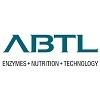Introduction
Poultry, due to its genetic, nutritional and managemental upgradation have become a source for quick productivity. But, skyrocketing conventional ingredients, fluctuating managemental conditions, and other quality parameters of rearing birds, farmer still expects compensation and extraordinary performance from chicken making it vulnerable to stressor. This stressor induces stress by generating free radicals inside the body which subsequently leads to loss in productivity and profitability.
In general, the stressor are classified into four groups: environmental, nutritional, technological and internal. The body as an inherent mechanism to neutralize these free radicals, but if the generation of free radicals becomes more than the antioxidant, it leads to cellular damages and inflammation.
The inflammation is a double-edged sword, it protects the body but also produces harmful effect on the body. The beneficial vs harmful effect of the inflammation depends upon the intensity and severity of inflammation.
Inflammation and Oxidative stress: Two sides of the same coin
Inflammation and Oxidative stress are interdependent on each other. During inflammation activated macrophages produces large amount of free radicals or reactive species (RS) to kill the microbes.
Inflammation is a pathological condition characterized by immune cell infiltration and release of reactive species by these cell, leading to tissue injury. RS generated by inflammatory cells (besides causing direct oxidative stress to remove pathogens) also stimulates pathways that lead to amplification of inflammation. RS-induced kinase leads to the generation of pro inflammatory cytokines and chemokines. Once triggered, these cytokines and chemokines bind to there respective receptor (such as platelet derived growth factor receptor) that are well established to generate RS. RS is thus both upstream and downstream of the inflammation cycle.
As the inflammatory process can induce oxidative stress, the oxidative stress can also induce inflammation through activation of multiple pathways. The reactive species hydrogen peroxide can induce inflammation through activation.
The reactive species generated regulate redox sensitive transcription factor such as Nuclear Factor Kappa B, this factor when in inactive form, localized in the cytoplasm of cells and are bound to cytosolic proteins like IkB. The reactive species drive modification in IkB proteins, thus freeing NF-kB, which then translocate to the nucleus where it induces expression of several genes that express inflammatory proteins. Besides NF-kB, other transcription factor, such as Activator protein -1, hypoxia inducible factor, peroxisome proliferator activator receptor gamma, β canteen/Wnt and Nuclear factor-2 are also regulated by reactive species.
Systemic Enzymes: Inflammation Resolver and Stress Reliever
Once inflammation sets in, it is also necessary to control the inflammatory process and bring the homeostasis. The body has inbuilt mechanism to resolve the inflammation and bring the homeostasis. Lipid mediators primarily derived from PUFA play a key role for resolution of inflammation. These mediator are known as pro-resolvin mediators. The ω3 and ω6 PUFAs under LOX mediated catalysis result in different kinds of lipid mediators. Among these, E (RvE) and D (RvD) series resolving are leading proresolvin mediators. LOXs (5,12 and 15 LOX) are key enzyme which catalyze the biosynthesis of SPMs and non specific inhibition of NSAIDs affect native inflammation resolution. While on other hand, serratopeptidase and similar enzyme indirectly assist resolution of inflammation as they do not affect LOX catalyzed SPMs production.

Systemic Enzymes such as Serratiopeptidase, Nattokinase, Bromelain and Papain are proteolytic in nature and has been shown to quite effective in resolving inflammation. The basic condition of the systemic effect of proteases administered orally is their absorption in an enzymatically active form. The proteases will reach the mucosa of the small intestine with a pH of about 7. The systemic enzymes are absorbed from the digestive tract, into the systemic circulation, from where it penetrates all tissues. After absorption, certain parts of the proteolytic enzymes pass into the blood stream and the lymph where their enzymatic activity allows them to bind to natural antiproteases of which the most important are alpha-2-macroglobulin (a-2- M).
It reaches high concentrations in the inflamed tissues. They hydrolyse bradykinin, histamine, and serotonin thereby reduces inflammation and improves microcirculation and expectoration of sputum. Thus, it reduces capillary permeability and breakdown of proteins and exudates. They have an effect in regulating immune cell migration from lymph node to inflamed and injured tissue. Such a unique mechanism and broad substrate affinity suggest a role of the enzyme in bringing tissue to normal condition i.e., maintaining homeostasis
In normal inflammatory processes, an entire range of cytokines come into play. These cytokines can contribute to the development of imbalances in the inflammatory process. Lately, attention has been focused mainly on the autocrine cytokine TGF-β, whose excessive formation plays a part in various immuno-pathological processes. Cytokines in plasma are bound (like proteases) to antiproteases, particularly to a-2-M, which has a linked systemic enzyme, a stable bond is formed, which in turn inactivates the cytokine. Consequently, the whole complex (protease-antiprotease-cytokine) is quickly eliminated by phagocytosis. Therefore, systemic enzymes can help to accelerate the clearance of increased levels of certain cytokines.
IMMUNOTECH™ FORTE: Potent Immunomodulator and Stress Reliever
IMMUNOTECH™ FORTE is a unique mix of systemic enzymes, antioxidants, and amino acid. The enzymes combination of Serratiopeptidase, Nattokinase, Bromelain, Papain, that stimulates immunity, reduces oedema, fights inflammation, had great fibrinolytic activity at cellular level, also have soothing effect on stomach and aids in digestion.The antioxidants present in IMMUNOTECH™ FORTE are Rutin, Vitamin E and Vitamin C, they scavenges free radicals, and relives body from oxidative stress.












